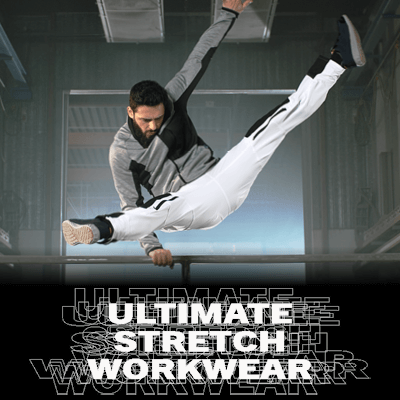Be prepared
Wed, 10 Nov 2010
It is not always fun with cold, wet weather and high winds - but the weather in any case should not determine whether you feel comfortable in your working day.
Dress in layers and have a comfortable working day where you are always warm - and where you can take off a single layer or take more clothes on if the temperature or the working environment changes. Remember also to choose appropriate safety footwear.
Inner layer
As an inner layer you should wear an elastic material that fits snugly into the body, and, most importantly is moisture wicking. It should serve as an extra layer of skin and underwear should never feel wet against the skin. Functional underwear’s finest attribute is to instantly distribute moisture from a large area of the skin area and to transport moisture out to the next layer of clothing. Depending on level of activity, you can choose underwear with greater or lesser degrees of insulating properties. Select, for example, underwear containing wool if you want extra warmth close to the skin.
Middle Layer:
The next layer of clothes is there to keep you warm. When you dress in layers, for example, T-shirts, Polo Shirts, Sweatshirts, Jackets and Hats, you have the possibility to take a layer off or put an extra layer on when temperatures change during a working day. Remember to make sure that these layers cover well up the neck and throat and that the arms are long enough so you don’t freeze your wrists. Blood vessels in the wrist lie close to the skin and if you are cold here then the bloods circulation makes you cold around the body.
Outerwear
When you choose outerwear you should look for two things. Partly after functions such as pockets and straps that fit to your tools and partly after properties that can protect you from the weather and the surrounding temperature. Choose windproof and waterproof workwear if you work in changing temperatures. Breathable outerwear is also a huge plus when you move around a lot. If you are only outdoors for short periods of time you can just take a set of rainwear with you instead of having waterproof clothes on the whole time. If you choose outerwear with e removable lining, you also have the possibility to regulate your temperature and use the same jacket in the spring with wet weather and warm temperatures. Last but not least select for activity. Choose a style which you feel best fits for example a long parka or a short pilot jacket – or something in between. Also decide if you need a hood or hat. All possibilities can be found also in fluorescent colours.
![]()
Keep your feet warm
Winter is time for boots, especially, if you spend a lot of time outdoors. When the cold sets in, there are some special things to consider when choosing safety footwear. If you have problems with the formation of thermal bridges through the midsole, you should choose safety footwear with a midsole which is made of a material other than steel – e.g. a textile midsole. If you work in an environment with moisture, water and mud, you have the great advantage of choosing footwear with a tex-material, making the footwear waterproof.
Winter is also a time when the ground is frequently wet, slippery and muddy. Therefore, slip resistancy is of utmost importance, so you can keep balance in all working situations. A high slip resistance is achieved by the footwear’s sole having the right design and a good profile depth. The material is also important - rubber in the sole provides a good grip. Go for footwear that is marked with SRC - that indicates the highest class of certified slip resistance. Additionally, you should always make sure that the footwear is firmly on your foot tying the laces properly.
We recommend MASCOT® Kamet if you want a waterproof boot with a textile mid sole. To ensure an extra high slip resistance, you can choose one of the new models, for example MASCOT® Elbrus or MASCOT® Elgon, which have rubber soles and have achieved the highest class of slip resistance, SRC.
Remember also to choose some good socks, which support the foot well. They should have high elasticity, so they sit firmly on the foot. If the socks fall down, they may form folds, which over time can hurt the foot.





















